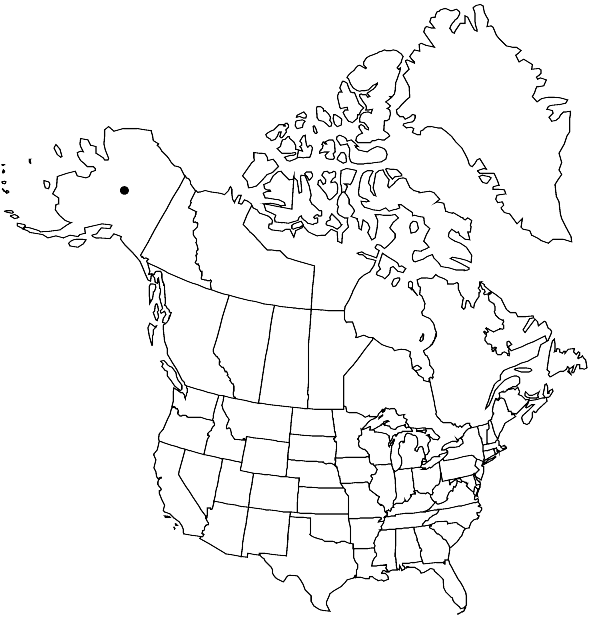Polytrichastrum papillatum
J. Hattori Bot. Lab. 38: 633, figs. 12–24. 1974,.
Plants slender, with the aspect of P. alpinum var. septentrionale. Stems to 2 cm, leafless below, leafy above. Leaves channeled and incurved when dry, spreading when moist, narrowly triangular, from a broadly elliptic, hyaline-margined sheathing base; marginal lamina serrate to almost entire; lamellae 5–6 cells high, crenate in profile, with each cell crowned by a papillose knob, the marginal cells in section pyriform. [Seta to 1.5 cm, curved. Capsule subspherical; exothecial cells with a distinct thin spot; peristome teeth ca. 40, hyaline, now and then compound.]
Habitat: Substrate and elevation undetermined
Distribution

Alaska, Asia (Kashmir), Asia (e Nepal)
Discussion
Polytrichastrum papillatum is known in North America from a single, sterile collection from southern Alaska (Valdez), collected by F. J. Hermann, but is possibly more widespread and overlooked. The marginal cells of the lamellae are coarsely papillose, and resemble those of P. alpinum in section. In profile, however, the lamellae are crenate, the marginal cells crowned by a papillose knob. The exothecial cells with a pale but distinct thin spot in the outer wall further distinguish this species from P. alpinum.
Selected References
None.
Lower Taxa
"broadened" is not a number.